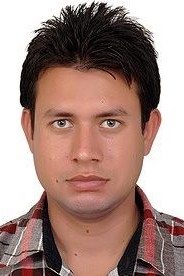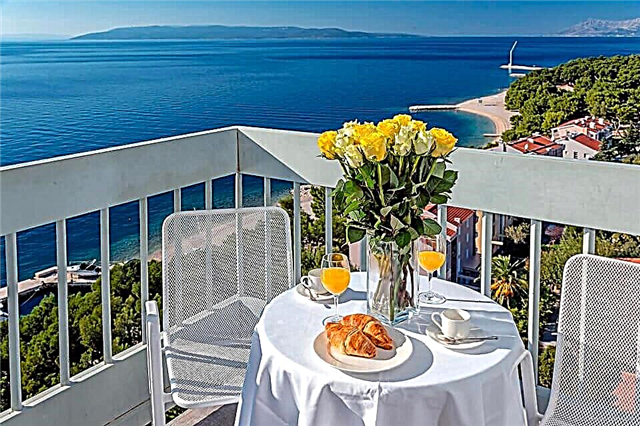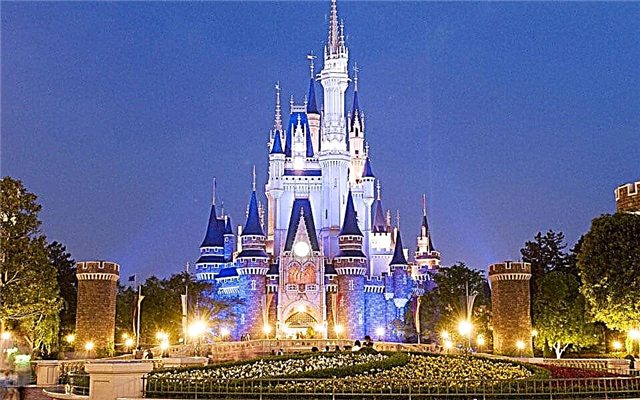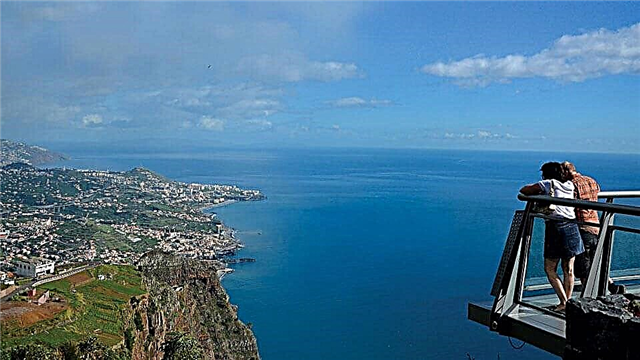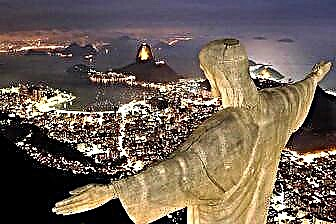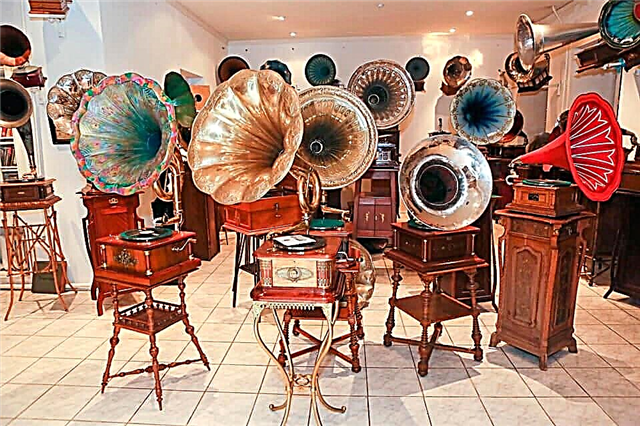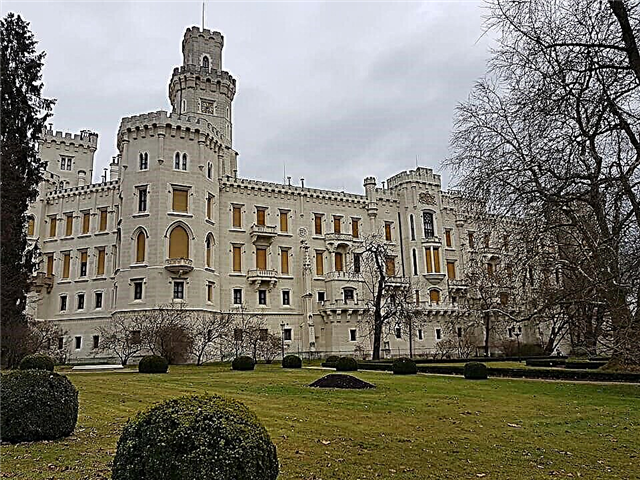The sights of this small European country are much easier to see when you are driving. Having collected the necessary information in advance, you will be able to plan your route on your own, staying in each historical and cultural center exactly as long as you need. What to see in the Czech Republic by car yourself? These can be large cities such as Prague, picturesque villages, resort towns, ancient castles, national parks. It all depends on your preference. Let's talk about the sights in more detail.
The advantages of car rental

It is the car that will allow you to look into such interesting corners that you would hardly visit as part of organized excursions. At any time you can make a stop to sit in a cafe, or take a closer look at a fountain or monument. You will choose the hotels yourself, determine the order of sightseeing of certain Czech cities.
At the same time, it is very convenient to use the myrentacar.com service. Any of dozens of modern cars in excellent condition are at your service. You can choose a bigger or smaller car depending on the number of travelers. All conditions and prices are in plain sight, there are no hidden fees, you will immediately know the final price. There are also low deposits and an honest assessment of car damage if an accident suddenly happens. In short, this service provider can be recommended with a clear conscience.
Prague

The most convenient way to start your acquaintance with the Czech Republic is from Prague. After all, Russians most often come by train or fly by plane to the capital. It is worth remembering that Prague is divided into 15 districts, their numbering depends on the distance from the central part of the city. A must-see is the Old City (Old Place). Here is the house where Kafka and Petrarch lived at different times.
On the Old Town Square, you can admire the Town Hall - there is a clock with moving figures. An excellent example of the Gothic style is the Church of the Virgin Mary, and the Church of St. Nicholas was built in the Baroque style. The Czechs also honor the monument to the patriot Jan Hus. It is also recommended to visit the Jewish Quarter in the Old City, where persons of the Jewish faith have settled since the 13th century. Many old buildings have survived here. One of the oldest universities in Europe also attracts attention.
The pride of the capital is Prague Castle, which includes palaces, temples, ancient buildings and the residence of the President of the country. A visit to Petrin Hill with its sights will give you a lot of impressions. And, of course, you must definitely stand on the famous Charles Bridge, which is decorated with many sculptures.
Karlovy Vary

One of the most popular resorts in the country. You can come here to be treated with healing mineral waters, but there are many sights in Karlovy Vary. The Dvorak Gardens, named after the famous composer, are very beautiful. Here you can not only take a walk, but also order your portrait, which will be gladly painted by local artists. Climb to the very top of the Diana Tower - by stairs or using the elevator. The best observation deck in the city is located here. Children will be delighted to visit the Butterfly Garden.
Beauties with exotic colors live here, there are many very large specimens. Butterflies are not afraid of people, you can take pictures with them. An unusually beautiful church of St. Mary Magdalene is a cultural monument. There are always a lot of tourists here. And, of course, you will notice the plague pole. It is dedicated to the Holy Trinity, in gratitude for the plague that bypassed this city in the Middle Ages. Also, guests of Karlovy Vary must try the mineral water. It is worth comparing the taste of water from different sources. Visit the Mlynska, Market and Hot Spring Colonnades - at the same time you can admire the old buildings.
Loket castle

It was founded at the beginning of the 12th century. The name was apparently born from the word "elbow", since the bend of the Ohře River here resembles a bent arm. At first, the castle was sustained in a heavy Romanesque style. Then, as a result of numerous reconstructions, Loket turned into a Gothic fortress. At first, he was entrusted with the task of protecting trade routes, then Loket began to play the role of an administrative center. This place was loved by Charles IV and, according to legend, he also discovered a mineral spring in the vicinity. The fortress was not taken during the Hussite wars, and for some time it was considered impregnable.
Then Loket was rebuilt under King Wenceslas IV, becoming one of the examples of the Gothic style. In the 18th century there was a prison here, and only in the 90s of the last century the fortress became a museum. Today, here you can see the Margrave's house, prison cells and rooms where prisoners were tortured, a collection of weapons and much more. An excellent view will open to those who climb the old Romanesque tower to admire the surroundings. In the castle you can make wishes - they will come true. And also try and take with you the delicious Florian beer, it is not sold anywhere else.
Marianske Lazne

In the vicinity of this small town, 140 mineral springs gush out of the ground, some of them are used for medicinal purposes. It is difficult to say which water is the most delicious - you can try and compare it yourself. The ancient source of the Cross, the sources of Rodolphe, Mary, Parish, Lesnaya, Ambroz, Ferdinand, Carolina, Alexandra - each of them has its own history, its own unique composition. Thousands of people come to Marianske Lazne for treatment every year.
Among the sights worth seeing are the old buildings, the Singing Fountain, the Kynzhvart castle (by the way, a lot of ancient literature is kept here), the local history museum. An excursion to the Tepla Monastery will also be interesting. Music lovers will be able to explore the house where Chopin lived. There is also a miniature park Boheminium in the city. Here are the most famous sights of the Czech Republic in a reduced form.
Pilsen

The ancient city was founded at the end of the 13th century. Soon it became a large shopping center where you could buy not only domestic but also German goods. The first Czech printed book "The Trojan Chronicle" was also published here in the second half of the 15th century. For about a year, the city was even the capital.
Many real architectural masterpieces have survived here, such as the 13th century church dedicated to St. Bartholomew. You can walk along the wide old streets, admire the buildings, each of which is designed in the spirit of its era. The complex of tunnels and cellars is also interesting - they rescued the population in hard times. Festivals are regularly held in the city. You can visit the Art Gallery, see the Brewery Museum, monastery, synagogue.
Czech krumlov

From Plzen it will be convenient to drive directly to Krumlov, the road will take no more than a couple of hours. Cesky Krumlov stands over the Vltava River. Its very name means "crooked meadow" - this is the shape of the peninsula. More than three hundred old buildings have been preserved here. You can explore a small town in one day. If you want to see the nearby Hluboka Castle, you can spend the night in Krumlov. The city was founded in the 13th century, later, as its rulers patronized art, many magnificent examples of the Gothic style appeared here.
In June, the celebration of the Five-Petal Rose, depicted on the coat of arms of the city, is held here - this is a very bright sight, you can also get to the Jazz Festival.It is necessary to see the city hall, the plague pillar on the Concorde Square, the St. Vitus Church, the construction of which began in the 14th century, and of course, the ancient castle of wondrous beauty. There are many shops and souvenir shops on the streets of the city.
Hluboka nad Vltavou castle

A magnificent castle that is definitely worth a visit. There is nothing left of the ancient Gluboka, which began to be built in the 13th century, but the neo-Gothic version is also very beautiful. The castle was founded on a high hill, it was assumed that it will play the role of a fortress. However, Gluboka did not have to defend himself. Over the course of several centuries, it changed owners, changed hands, and each time new owners rebuilt it.
A lot was done for the castle by representatives of the Schwarzenberg family. They made a beautiful estate out of Hluboka. Johann Adolph II, a very educated man for his time, rebuilt the castle, focusing on English samples, in particular, Windsor. After the Second World War, the castle was nationalized, and work on its restoration is still ongoing.
You can order various excursions, including in Russian - only this must be done in advance, otherwise you will have to listen to a guide who speaks Czech or English. During the excursions, you will see the inner chambers, collections of weapons and paintings, a huge library, and a kitchen. It is interesting to climb the castle tower and admire the surroundings from above. You can also take a walk in the beautiful park.
Cervena Lhota Castle

Another romantic castle on a rocky island. Chervena means "red", one of its owners painted the walls of the castle in this color. The neighboring village was founded in the 13th century. A fortress was later erected to protect it. In the 16th century, the knight Jan Koba acquired these lands, and instead of the citadel he decided to build a Renaissance castle here. The architect made changes to the surrounding landscape. So, according to his instructions, the water level in the pond was raised.
At the end of the 16th century, Vilém Ruth became the owner of the castle, during his reign it was repainted in red. The building acquired its current neo-Gothic appearance during the reign of Heinrich Eduard from the Schonburg-Hartenstein family. It happened in the middle of the 19th century. A century later, the castle was nationalized and became the property of the state. Tours here are held in Czech, but you can use the audio guide in Russian. During the inspection, you will see the household items and furniture of the owners, you will be taken through the inner chambers. It will take about an hour. And, of course, the castle is so beautiful that it needs to be captured in photographs.
Jindrichuv Hradec

It is a small town, on the site of which there was a Slavic settlement in the 10th century, and there was a small church in the Romanesque style. In the 12th century, Jindřich Vitkovic took over this place. His four brothers received other cities from his rich father. But they have a similar coat of arms - a rose with five petals, according to the number of brothers. In the 13th century, a Gothic castle was added to the fortress. This place was not damaged during the Hussite wars.
The town flourished in the 16th century, more and more buildings in the Renaissance style began to appear. The population earned by trade and crafts. In the 17th century, the castle belonged to the country's Chancellor Vilem Slavate, under him Hradec occupied the second place in the Czech Republic after Prague. Then the place was owned by the Chernin family - until the nationalization of the castle in 1945. Textile production was developed in the city; sewing machines were also made here. Now the castle is the main attraction of the city.
During the tour, you can see rooms decorated in various styles, magnificent paintings, ceremonial halls, a chapel. Of interest are the Black Tower and the Black Kitchen - these are the most ancient buildings. Also in the city you can see the church in honor of the Assumption of the Virgin Mary (here you can go up to the observation deck and look at the surroundings from above). Many seek to ride the narrow gauge railway, which has been in operation since the late 19th century. Today both modern and retro trains run on it.
Attractions include the Church of John the Baptist with Gothic frescoes and old sculptures, and the Franciscan monastery. Children will love the mechanical nativity scene. It is considered the largest in the world - more than a thousand figurines can be seen here. A local craftsman made the nativity scene in the 18th century, and the work took him 6 decades. It can be said that it is the work of a lifetime. The nativity scene is exhibited in the city museum, which has many other interesting exhibits.
Telc

A smart city that looks like it has come off a postcard. Once there were only wooden houses, but as a result of a strong fire they burned to the ground. Since then, the townspeople began to build houses of stone. Due to the presence of artificial reservoirs and the defensive canal Telč was named “Czech Venice”. No house here is like another, you can look at them for a long time.
The main square is worth a visit. The buildings surrounding it have an unusual architecture, they are decorated with stucco, painted in different colors. Each of them is already several centuries old. You can also see the traditional plague pillar in the Mimalist style on the square. The main attraction of the city is an ancient castle, a sample of the Renaissance. It is perfectly preserved, inside there are richly decorated rooms, an art gallery, hunting trophies, beautiful carvings.
It is also recommended to visit the Chapel of All Saints, which was built by Italian architects, inside there are Renaissance frescoes. The oldest building in the city is the Church of the Holy Spirit. And on the adjacent tower in honor of the Holy Trinity there is an observation deck. In short, Telč is not only a revived history, but also a very beautiful city worth seeing.
Kutná Hora

Founded in the 13th century, this city was of great importance for the Czech Republic - silver deposits were found here. Small settlements were formed near the mines. The current name means "old cassock". According to legend, one of the monks fell asleep on the hill, and upon awakening, he found silver bars exactly where he saw them in a dream. He covered this place with his robe.
When the mining of silver in these places developed, not only residential buildings, but also taverns and shops were built here. The miners' settlements united, and Kutná Hora became the royal city. Many sights have been preserved here. The Cathedral of St. Barbara, the Church of St. James, the Jesuit College, the old mint, the Silver Museum and much more. And, of course, you can buy wonderful souvenirs here.
Czech Sternberg

The castle, the name of which consists of two words - "star" and "hill". The structure really stands on a rock, and its previous owners had a star on their coat of arms. The river flows below. A ravine, powerful walls and towers - all this would have played into the hands of the defenders if Sternberg had been besieged. Therefore, the castle was considered impregnable for a long time. But during the Hussite Wars, Sternberg was nevertheless taken by the king's troops and plundered. After that, additional fortifications were built in the castle, the moat was deepened.
In the 18th century, Sternberg was partially rebuilt, giving it the features of the Baroque, decorated with stucco and paintings. The ceremonial halls were especially beautifully decorated. A century later, the castle acquired the features of romanticism, a park was laid out. Today you can come here on an excursion, see paintings and engravings, collections of watches, ancient weapons, admire furniture and dishes.
Ossuary

This is one of those sights that cannot be forgotten. In the 13th century, earth brought from distant Jerusalem was scattered in a small cemetery in the suburb of Kutna Hora. Since then, many people have bequeathed to bury them here. To this must be added the epidemics that ravaged Europe and numerous wars. There was not enough space in the cemetery. At the beginning of the 15th century, it was decided to build a cathedral with a tomb, transfer old bones there and make room for new graves.
Then the cathedral was rebuilt several times, and at the end of the 18th century the monastery lands passed to the Schwarzenberg family. A skilled woodcarver transformed the Ossuary. There is now a candelabrum carved from bones, as well as other products from the same material. In short, a real House of Death. You can inspect the Ossuary any day of the week; it is open from morning to evening.
Moravian beauty

This is a very popular attraction of the region - the cave system, one of the largest in Europe. Located north of the city of Brno. In total, the system includes more than a thousand caves, but tourists can see only 5. However, such a trip will take a couple of days - only then you can see everything in full. You will see underground halls and corridors, lakes and a river, whole waterfalls of stalactites and stalagmites, and even an underground factory.
For the first time, people began to descend into the local caves in the 17th century, and speleologists began to explore them much later - in the 20th century. Then the system was recognized as a state reserve. Tourist routes have been developed. They do not require special physical training, but they make a great impression - it will be interesting for both adults and children.
Macoch Abyss

One of the most interesting parts of the Moravian Region. The abyss was discovered at the beginning of the 18th century, but until the beginning of the 20th century, its study was carried out sporadically. The name Macokha (stepmother) is associated with a legend. The evil stepmother, in order to restore health to her son, threw her stepson into the abyss. And then, realizing what she had done, she jumped after herself. For many years, the abyss was considered bottomless. In 1909, a group of scientists went down to the very bottom.
Today, Macocha can be viewed both from the inside - as part of a tour of the caves, and from above - by taking the funicular and going to one of the observation platforms to look down. This can be done without a guide, on your own. If you go to the caves, then some of them will pass, and some you will sail by boat along the underground river. During such an excursion, you can see unusual plants and various representatives of the animal world. Below there are lakes - Upper and Lower. The maximum depth reaches 30m. There is a guest house next to the abyss, so if you decide to stay in these parts, this can be easily done.
Brno

An ancient city in Moravia, it is more than a thousand years old. Today about 400 thousand inhabitants live here. Initially it had a defensive meaning. There was also one of the largest prisons here. Since the 16th century, Brno has been the center of Moravia. In the 19th century, industry was actively developing here, the Technical University was built.

During the Second World War, Brno was badly destroyed by bombing. Today tourists visit the art galleries, the largest of which is considered the Moravian one, visit the Museum of the Moravian Land, which owns several ancient buildings. There is a Museum of Technology and a Museum of Roma Culture in the city. Also in Brno there is a very beautiful fireworks parade and the international music festival "Spielberg". In addition, you can find the Hot Air Balloon Festival here.
Saxon Switzerland

It is a very beautiful region with a rich history. The name is associated with young artists who studied drawing in Dresden. They often came to these parts to capture the local landscapes. Mountains and rivers reminded them of their native Switzerland, so they began to call this place. Soon the name appeared on the maps. In the 19th century, the landscapes of Saxon Switzerland were partially damaged by the mines, the public was outraged, but only in the middle of the 20th century, the most picturesque territories began to be protected by the state. Now ecological tourism is developed here.
Everyone can admire the unusual rocks with fantastic shapes, meadows, rivers. There is also a nature reserve, but guests are not allowed there so that they do not interfere with the animals. Of the architectural sights, it is worth noting the Konigstein castle located on the territory of Saxon Switzerland, built on the top of a mountain. There is a museum inside, there are signs. You also need to visit the arched bridge Bastei, stand on the observation platforms.
Thus, traveling around the Czech Republic by car will allow you to see a huge number of attractions of this amazing country.

